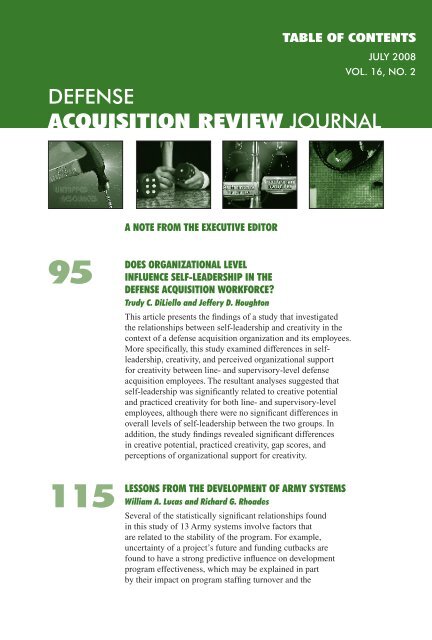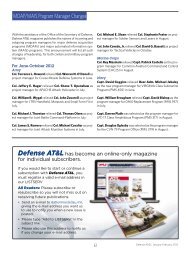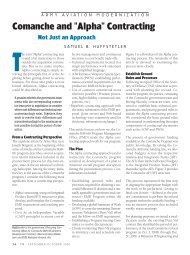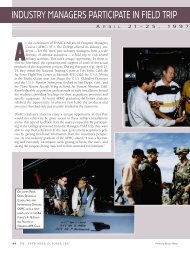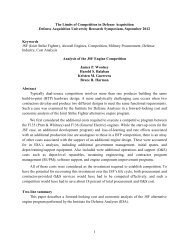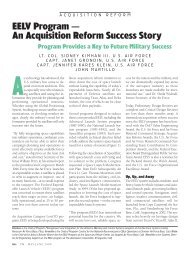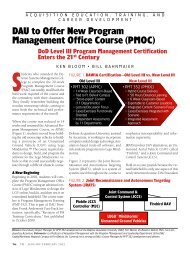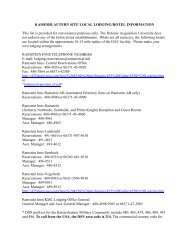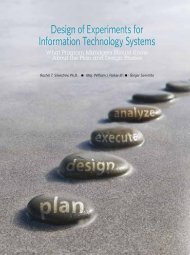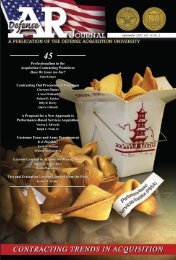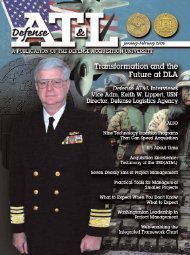Defense ARJ - Defense Acquisition University
Defense ARJ - Defense Acquisition University
Defense ARJ - Defense Acquisition University
You also want an ePaper? Increase the reach of your titles
YUMPU automatically turns print PDFs into web optimized ePapers that Google loves.
tAble of contents<br />
<strong>Defense</strong><br />
<strong>Acquisition</strong> Review Journal<br />
95<br />
115<br />
A note fRom the executive editoR<br />
does oRGAniZAtionAl level<br />
influence self-leAdeRshiP in the<br />
defense <strong>Acquisition</strong> woRKfoRce?<br />
Trudy C. DiLiello and Jeffery D. Houghton<br />
This article presents the findings of a study that investigated<br />
the relationships between self-leadership and creativity in the<br />
context of a defense acquisition organization and its employees.<br />
More specifically, this study examined differences in selfleadership,<br />
creativity, and perceived organizational support<br />
for creativity between line- and supervisory-level defense<br />
acquisition employees. The resultant analyses suggested that<br />
self-leadership was significantly related to creative potential<br />
and practiced creativity for both line- and supervisory-level<br />
employees, although there were no significant differences in<br />
overall levels of self-leadership between the two groups. In<br />
addition, the study findings revealed significant differences<br />
in creative potential, practiced creativity, gap scores, and<br />
perceptions of organizational support for creativity.<br />
lessons fRom the develoPment of ARmY sYstems<br />
William A. Lucas and Richard G. Rhoades<br />
Several of the statistically significant relationships found<br />
in this study of 13 Army systems involve factors that<br />
are related to the stability of the program. For example,<br />
uncertainty of a project’s future and funding cutbacks are<br />
found to have a strong predictive influence on development<br />
program effectiveness, which may be explained in part<br />
by their impact on program staffing turnover and the<br />
July 2008<br />
Vol. 16, no. 2


